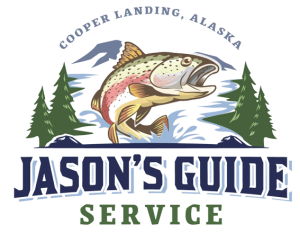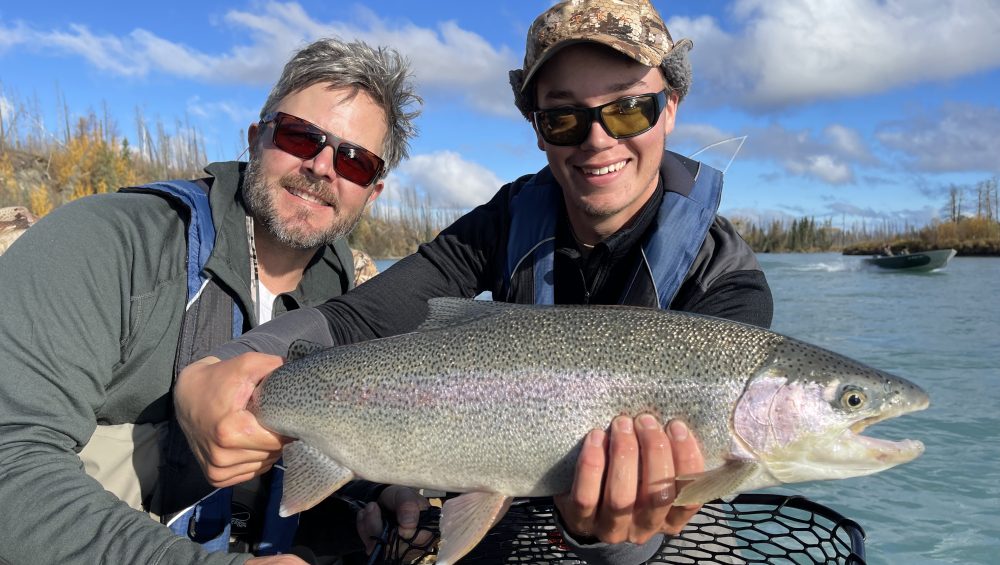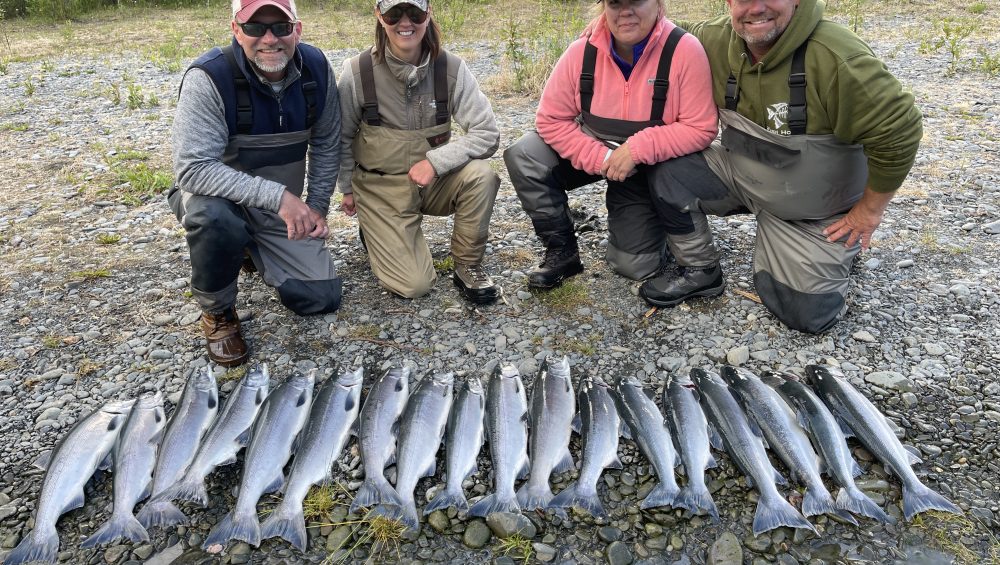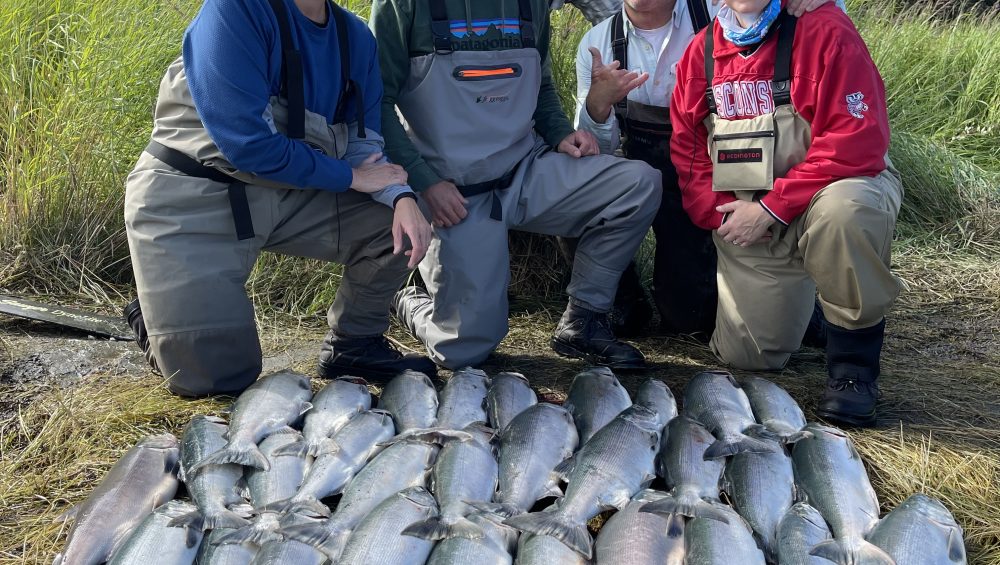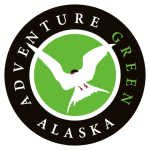In 1992 Robert Redford directed the movie, A River Runs Through It. Brad Pitt, the lead actor was a master fly angler and the film became a box office hit. Soon after the movie premiered, everyone and their brother and sister wanted to try their hand at fly fishing. The movie romanticized fly fishing with it’s breath-taking beauty and spectacular fly fishing scenes where Pitt would make 100 foot casts and catch huge trout in fast water. As cool as the movie was, the average fly fisherman never has to swim a class four rapids to land land a big trout or cast a fly rod a country mile.
The Kenai River boasts some of the best fly fishing in Alaska, and the world. The Kenai has all five species of Pacific salmon as well as rainbow trout and Dolly Varden char. We target sockeye salmon, silver salmon, rainbow trout, and Dolly Varden char with fly rods on the Kenai River. We target these fish in user-friendly aqua-blue water that is nestled into the Kenai Mountains of the Chugach National Forest and Kenai National Wildlife Refuge.
Fly fishing on the Kenai River consists of 80 to 90 percent nymph-style fishing with an indicator and doesn’t require the long casts that can be necessary when fishing salt water flats or when you are starring in the movies. Nymph fishing with indicators as we do on the Kenai River is a very simple cast and presentation where you dead-drift your fly or beads the same speed as the current to emulate a natural dead drift. The dead-drift is achieved by managing your fly line on top of the water after a good cast from the drift boat or shore. Line management is as easy as “high sticking” with your rod, which is keeping your rod tip pointing to the sky to keep most of your fly line off the water and/or mending your line by flipping your loop or belly in your fly line up stream of your indicator.
The other styles of fly fishing we do on the Kenai River are dry fly fishing for rainbow trout and Dolly Varden char, and swinging flies for trout, char, and silver salmon. We also strip flies for silver salmon. The dry fly fishing is a purist’s dream and for good reason. It can be some of the most fun a person can have fly fishing.
Dry flies work best when there is a good hatch of insects on the river. The Kenai River’s best dry fly hatches in the summer months are the caddis hatch and the may fly hatch. When fishing dry flies you do a traditional cast and watch your fly on top of the water until the big rainbow trout or Dolly Varden char comes to the surface and slurps up your fly. Watching a trout or char suck up a bug you are casting is an exhilarating experience that won’t soon be forgotten.
The swing technique is probably done the least on the Kenai River, but is a fun way to really feel the hit or take from the salmon, trout, or char. Swinging flies on the Kenai consists of casting your streamer fly into the current and letting it swing through the water column that the fish are in and waiting for the big tug. The fish generally crush the streamers and try and rip the rod right out of your hands. Stripping flies for silver salmon is a fun and explosive way to catch fish that weigh on average between eight to twelve pounds and spend as much time out of the water as in it. We cast and strip flies for silver salmon both from shore and the boat.
Fly fishing the Kenai River doesn’t require long casts or hours and days of practice. Nymph fishing with an indicator is the easiest technique to learn because shorter casts are the norm especially from the boat. The swinging, dry fly fishing, and stripping are techniques where you are required to cast a little farther than nymph fishing, but we put you on the fish so you don’t have to cast a country mile to present your fly to the fish.
Jason’s Guide Service provides highly trained professionals that teach you the ways of the fly rod and fly fishing techniques in a fun no pressure environment. Jason’s Guide Service believes that everyone comes to the boat for one reason and one reason only, and that is to have great time. The joys of fly fishing are many, it’s as much about the journey of learning and being a part of nature and flowing with the river as it is catching fish. The first few fish you catch on a fly rod no matter the size or species will be fish you never forget.
If fly fishing is on your to do list but you have always been a little intimidated by it look no further and wait no longer, come to the Kenai River and fish with Jason’s Guide Service and we will make memories that last a lifetime.
